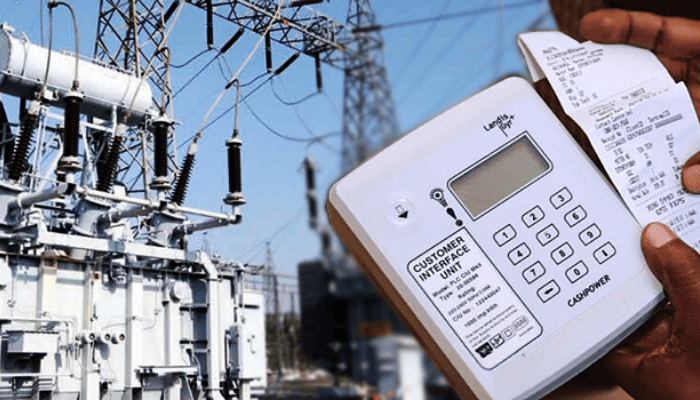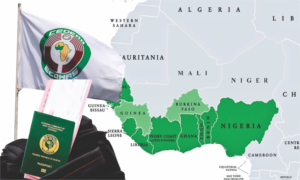New electricity bill seen igniting FG-states’ tussle

The Electricity Act (Amendment) Bill, 2025, which has passed the second reading at the Senate, is introducing what lawmakers have described as ‘real decentralisation’ of Nigeria’s power sector, formally transferring regulatory powers to state governments.
But beneath the surface of this ambitious reform lies a complex regulatory architecture that some experts warn could create more problems than it solves.
While the bill grants states new powers, it also retains significant federal control, particularly through the Nigerian Electricity Regulatory Commission (NERC), which remains the primary authority on matters related to the national grid, market standards, and technical regulations.
This dual structure, they argue, may sow confusion and spark jurisdictional clashes between federal and state actors.
Analysts say the proposed law introduces what appears to be decentralisation in principle but embeds centralised control in practice.
As states race to establish their own electricity markets, concerns are growing that the bill, if not carefully implemented, could lead to overlapping mandates, policy contradictions, and a fresh wave of institutional power struggles, ultimately stalling the very progress it was designed to unlock.
The bill, sponsored by Enyinnaya Abaribe, senator representing Abia South, seeks to amend the Electricity Act 2023, and provides a framework for the creation of state electricity markets and regulators.
According to the lawmaker, the amendments are necessary to address critical issues that have emerged since the implementation of the 2023 Act.
The bill proposes 28 new clauses targeting key reforms such as criminalisation of electricity infrastructure vandalism, improved regulatory coordination between federal and state governments, and clarification of transitional provisions for state-level electricity regulation.
It reaffirms the rights of state houses of assembly to make laws on electricity generation, transmission, and distribution within their jurisdictions.
“The new amendment is a deliberate move to empower states to take charge of their electricity needs and bridge the service gap in underserved and unserved areas,” Abaribe said.
“It is in response to the growing demand for localised power solutions and policy control.”
Section 2(2) of the amendment grants states the power to “establish, promote and manage State electricity power stations,” and to “create State electricity regulators with powers to oversee generation, transmission, and distribution within their territories.”
States are also authorised to develop integrated electricity policies and strategic implementation plans.
Despite this devolution, the federal government retains control over all activities connected to the national grid, the National Wholesale Electricity Market (NWEM), and the regulation of technical and consumer standards.
“No law enacted by the State House of Assembly shall conflict with the provisions of the Principal Act or the Amendment regarding the regulation of activities on the national grid system,” the bill stipulates.
To manage potential overlaps between state and federal regulators, the bill introduces the Forum of Electricity Regulators (FERs), a central platform for harmonising standards and resolving inter-jurisdictional disputes.
It comprises the chairman of the NERC, chairpersons of all State Electricity Regulatory Commissions (SERCs), and the managing director of the Nigerian Electricity Management Services Agency (NEMSA).
“The Forum is a proactive mechanism to prevent conflict, ensure regulatory alignment, and promote a seamless interface between the federal and state markets,” a provision of the bill notes.
Under Section 228B of the bill, FERs are tasked with facilitating technical coordination, developing harmonised codes, resolving disputes between regulators, and promoting common standards on consumer protection and operational performance.
According to lawmakers during the debate of the bill, “What the bill does is to give states the authority to regulate electricity within their borders, but with strings attached. The NERC remains the anchor regulator and still controls what happens if there’s any connection to the national grid.”
To ensure a smooth transition, the bill gives states a 12-month deadline from commencement to meet all prerequisites before assuming regulatory control.
The NERC may grant a further six-month conditional extension but retains the discretion to manage electricity matters in non-compliant states until full handover is feasible.
“The transfer of regulatory oversight shall be guided by clarity, specificity, flexibility, and predictability,” the bill reads.
“The decentralisation of regulatory powers must not create regulatory vacuums or deter investments.”
For intra-state electricity operations that rely on national grid infrastructure, the NERC’s regulatory oversight remains supreme. Section 230C reinforces that only activities disconnected from the national grid will fall exclusively under state regulation
The NERC also retains authority over all technical standards and operational codes across the country.
While the bill allows states to establish their own regulators and electricity markets, their autonomy is tied to the framework of national coordination through FERs and compliance with federal technical, environmental, and safety regulations.
Despite the decentralisation rhetoric, the emerging structure is one of shared governance.
The amendment reveals that the decentralisation is more of a guided or managed federalism, where states are allowed to act, but only within boundaries defined by the federal regulator.
States such as Lagos, Enugu, Edo, and Kaduna, which already have advanced electricity plans, are likely to be early beneficiaries of the reform.
But for many others, the transition may be hindered by capacity constraints and lack of technical expertise to establish fully functioning electricity markets.
Nonetheless, the bill signals a turning point in the Nigerian electricity landscape, offering subnational governments a legal and institutional framework to address power gaps independently.
The bill aims to strengthen coordination between national and sub-national regulatory bodies to reduce legal conflicts, address sectoral financing constraints amid mounting debts, and criminalise vandalism of critical electricity infrastructure.
The bill further seeks to clarify the transition of regulatory powers to state governments, especially with respect to the national grid; establish a clearer legal framework for host community engagement by licensees; improve industrial relations by balancing labour rights with essential service obligations; and redefine and operationalise the Power Consumer Assistance Fund as a replacement for the current unsustainable subsidy regime.
Possible power tussle
Emeka Okpukpara, partner at The Nextier Group, raised concerns about potential conflicts and power tussles that may arise from the proposed amendment of the Electricity Act, 2025.
He noted that the clauses on decentralisation of electricity may end up creating confusion that addresses the issue it was meant to correct.
He said, “These clauses are more likely to create confusion than clarity. If the bill is passed in its current form, it risks setting up a constitutional rivalry between the federal and state governments, a clear pathway to chaos if not carefully managed. The real question is: who will manage it?
“The amendment introduces a form of regulatory duality. On paper, it gives states room to operate, but in practice, it leaves the door open for NERC to intervene.”
“That opens up overlapping mandates, conflicting standards, and regulatory duplication. Rather than empowering states, it could end up muddying the waters.”
“There’s also a real risk that NERC, with its national stature and technical depth, could dominate the space, effectively overriding or clashing with state-level initiatives.”
This creates serious coordination challenges, especially as more states begin to design their own market structures and operational models.









